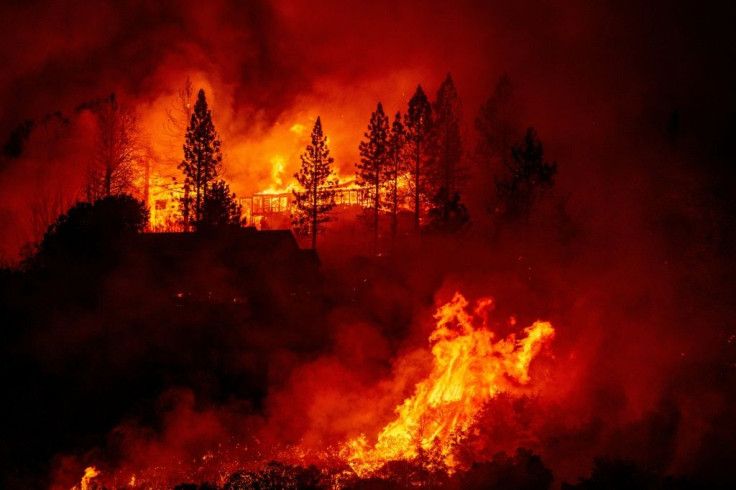California Wildfire Damage Can Be Seen From Space [Photo]
KEY POINTS
- Landsat 8 collected satellite data that revealed the depth of the Californian wildfires' effects
- The wildfires were caused by lightning
- Some researchers believe climate change played a part in the wildfires
New satellite imagery of California shows the devastating effects of the California wildfires that began in August. The data revealed the depth of the loss incurred from the events and showed just how far the two major wildfires spread across the region.
Landsat 8, an Earth observation satellite, collected data on Sept. 26, capturing the CZU Lightning Complex fire near Santa Cruz and the SCU Lightning Complex fire in Diablo Range. The area was blanketed by smoke for weeks before Landsat 8 able to capture the image.
"We needed a clear view of the land surface to make these measurements, and we were lucky enough to get one after so many smoky days," Christopher Potter, a remote-sensing researcher at NASA's Ames Research Center, told NASA's Earth Observatory. "It was the first satellite image we could use to tell how severe the burn was across a broad area."
Shades of tan and brown reveal the severity of damage to vegetation from the CZU Lightning Complex Fire and SCU Lightning Complex Fire in #California. Dark brown areas have little to no live vegetation left. https://t.co/il0YMJ529Q pic.twitter.com/B6Y3ScIfcB
— NASA Earth (@NASAEarth) October 15, 2020
The imagery revealed that the CZU Lightning Complex scar was burned deeply into the land. Beginning Aug. 16, this part of the region burned for 37 days following lightning strikes. The fire burned 86,509 acres (135 square miles) before it was contained, Live Science reported.
Just two days after the CZU Lightning Complex wildfire began, the SCU Lightning Complex then ignited on Aug. 18, burning an even bigger area of the region at about 396,624 acres (619 square miles).
The fire, unfortunately, lasted even longer than the first one. According to Cal Fire, the SCU Lightning Complex wildfire went on for about 44 days before being contained and was also caused by lightning strikes.
By comparing the images captured on Sept. 26 and July 24, before the wildfires, results revealed that the CZU Lightning Complex caused deep scars, with the fire leaving nothing but tree stumps and ashes behind. Meanwhile, data on the SCU Complex fire showed more surviving vegetation in the landscape.
According to NASA's Earth Observatory, the majority of the United States has been experiencing some level of drought for most of the year. Heat waves, as well as wildfires, have increased and lightning storms have also worsened.
"It is rare that we get more than one large lightning-induced fire in a year in California; this year, we had 10 lightning complex fires," Potter said.
He continued, "Some researchers think these lightning storms may be related to climate change. If global warming means more lightning storms like this in California, then we are in trouble."

© Copyright IBTimes 2025. All rights reserved.





















